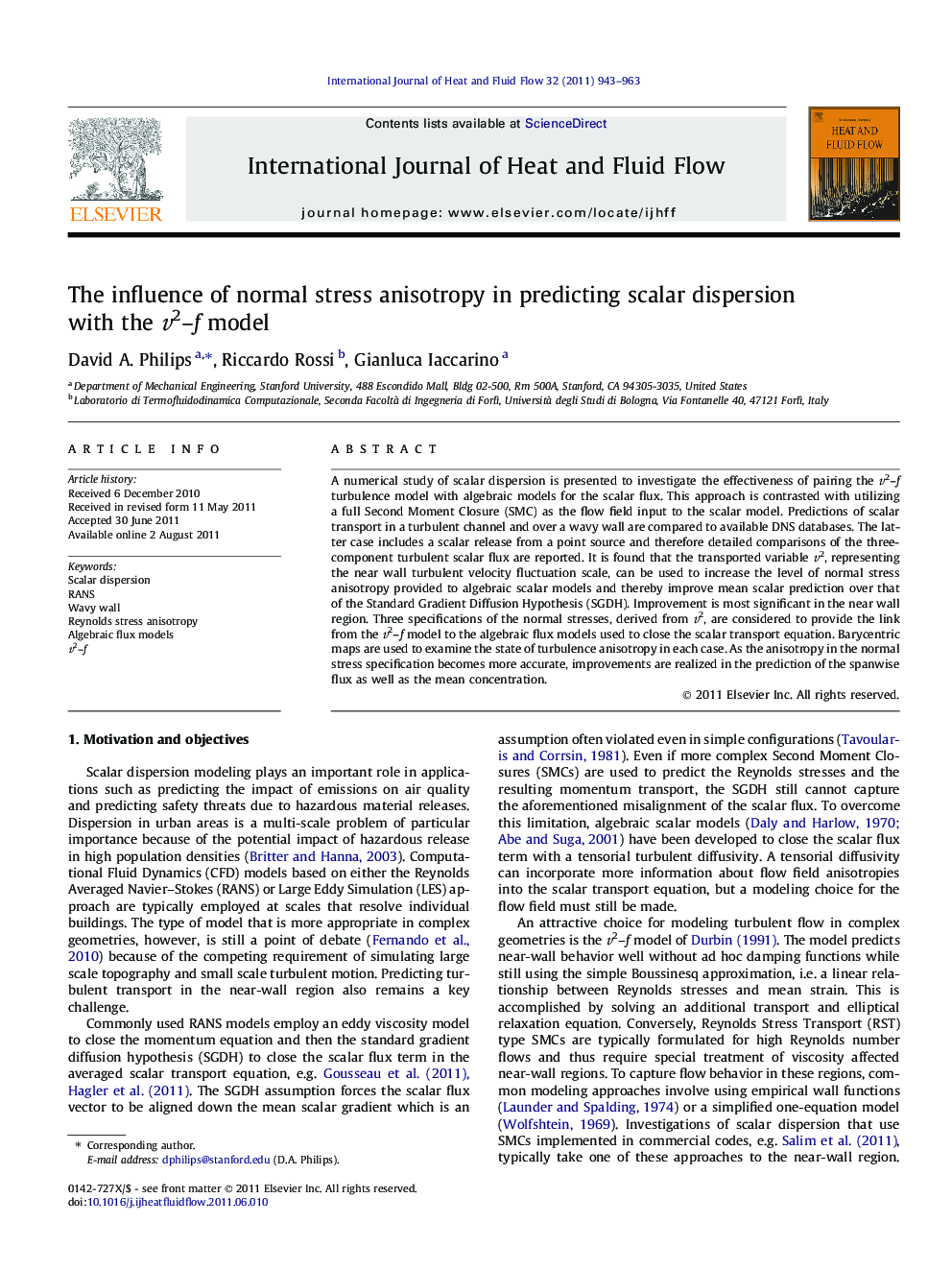| Article ID | Journal | Published Year | Pages | File Type |
|---|---|---|---|---|
| 655531 | International Journal of Heat and Fluid Flow | 2011 | 21 Pages |
A numerical study of scalar dispersion is presented to investigate the effectiveness of pairing the v2–f turbulence model with algebraic models for the scalar flux. This approach is contrasted with utilizing a full Second Moment Closure (SMC) as the flow field input to the scalar model. Predictions of scalar transport in a turbulent channel and over a wavy wall are compared to available DNS databases. The latter case includes a scalar release from a point source and therefore detailed comparisons of the three-component turbulent scalar flux are reported. It is found that the transported variable v2, representing the near wall turbulent velocity fluctuation scale, can be used to increase the level of normal stress anisotropy provided to algebraic scalar models and thereby improve mean scalar prediction over that of the Standard Gradient Diffusion Hypothesis (SGDH). Improvement is most significant in the near wall region. Three specifications of the normal stresses, derived from v2, are considered to provide the link from the v2–f model to the algebraic flux models used to close the scalar transport equation. Barycentric maps are used to examine the state of turbulence anisotropy in each case. As the anisotropy in the normal stress specification becomes more accurate, improvements are realized in the prediction of the spanwise flux as well as the mean concentration.
► Capturing flow anisotropy key to predicting scalar dispersion from localized sources. ► Boussinesq approximation and a scalar turbulent diffusivity limit dispersion prediction potential. ► Anisotropy information from the v2-f model incorporated with algebraic scalar flux models. ► Predictions of three-component turbulent scalar flux comparable to second moment closure approach.
